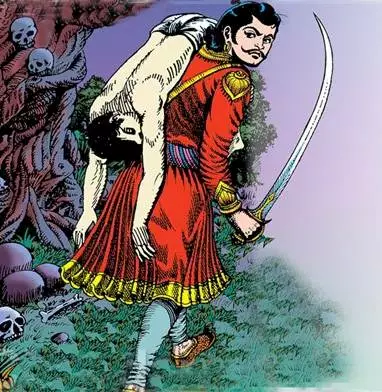Chandamama: When shall it's cult status be restored
Four years after top officials from Geodesic, the company which acquired Chandamama, a kids’ magazine in India, were put under the scanner by the Income Tax department, Enforcement Directorate and Economic Offences Wing for laundering of Rs 812 crore, rare copies and patents have been locked up in a 10,000 sqft room at Santacruz Electronics Export Processing Zone (SEEPZ).
18 Jul 2018 | By Amogh Dikshit
Chandamama was founded by Nagi Reddy and Chakrapani. It was first published in Telugu and Tamil as Ambulimama in July 1947. It was followed by the Kannada and Hindi edition in 1949. By 1990, Chandamama was published in 13 languages.
In 2007, Vishwanath Reddy, Nagi Reddy’s son, sold 94% of Chandamama’s stake to Geodesic, a Mumbai-based software service company. Geodesic re-launched Chandamama with a new design and also took up the task of digitising the content. Between 2008 and 2010, Geodesic also raised Rs 1,062-crore by floating foreign currency convertible bonds (FCCBs).

However, in the following period, top officials of Geodesic were probed for tax evasion and “alleged syphoning and laundering of Rs 812 crore”. Further investigation revealed that they had routed the money to six overseas shell companies in Paraguay, Uruguay, Chile, Guatemala and Honduras between 2008 and 2013 in the form of investment funds. These shell companies were apparently collecting agents for software sales, which were found to be bogus.
Most fans of Chandamama are distressed since the magazine is a treasure trove. The market for comics and related products like merchandise and films is estimated at USD40 billion (roughly Rs 160,000 crore). Japan, with its Manga books, makes up 30 per cent of the market, followed by the US and Europe. In stark contrast, India accounts for under 1 per cent.
But more importantly, it’s historical and literary value is infinite. As journalist and litterateur Mrinal Pande has said in her essay, Chandamama, with its attractive four-colour covers, its long-running, vividly-illustrated serials, its puzzles and jokes, and short tales from mythology, epics and old Sanskrit, Arabic and Persian classics, was soon a popular magazine offering great satisfaction to all of us involved in the venture. It added a new manner of knowledge, which differed from the stories in school texts. So, at home and among friends, we discussed the latest encounters between the wily Vetal and King Vikramaditya. In each episode, the king was meant to articulate an intricate moral puzzle or the Vetal would shout a warning that his head would fragment into a thousand particles – “Jo tooney jawab nahin diya to tera sar hazaar tukdon mein phoot jayega!” This dialogue attained a cult status of sorts and would be muttered in low tones to general merriment during classes when a stern teacher hurled a question at the class duffer.”












 See All
See All